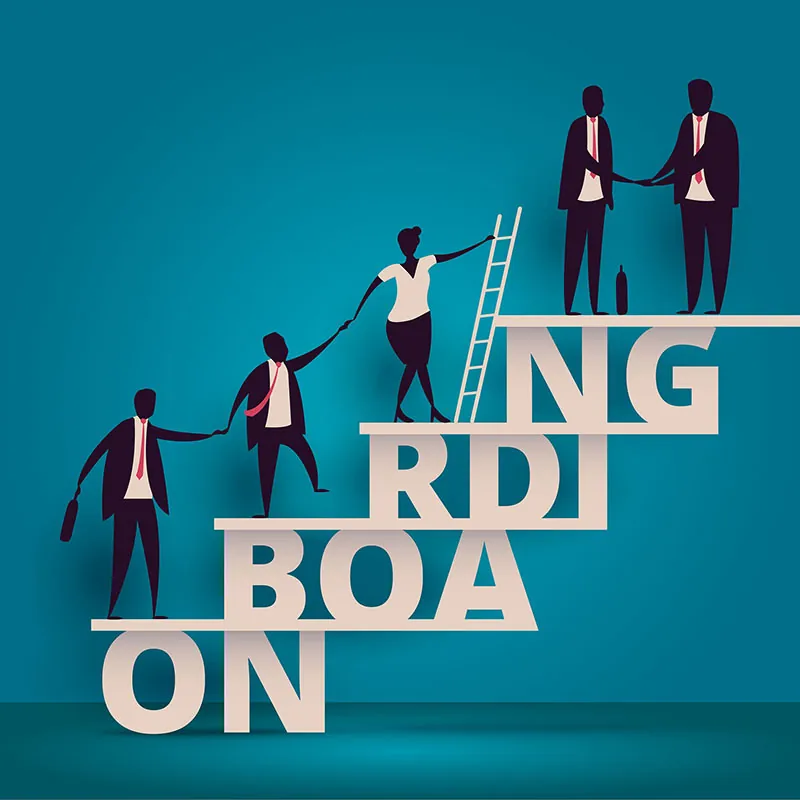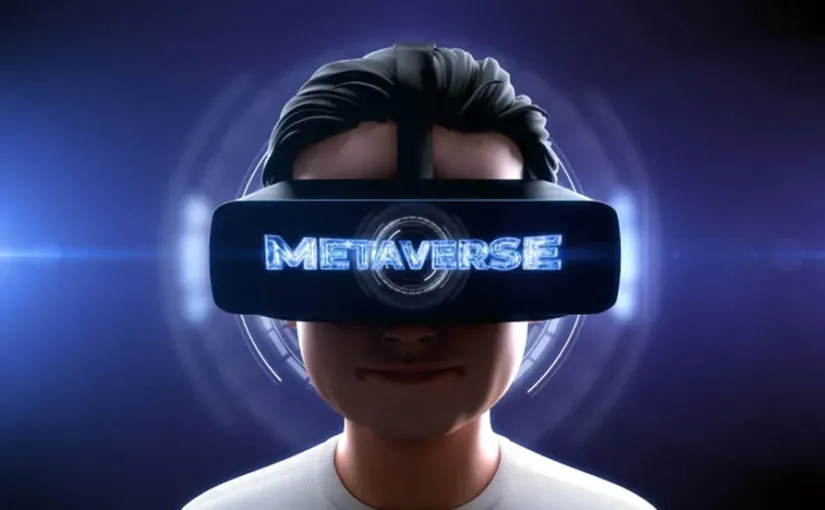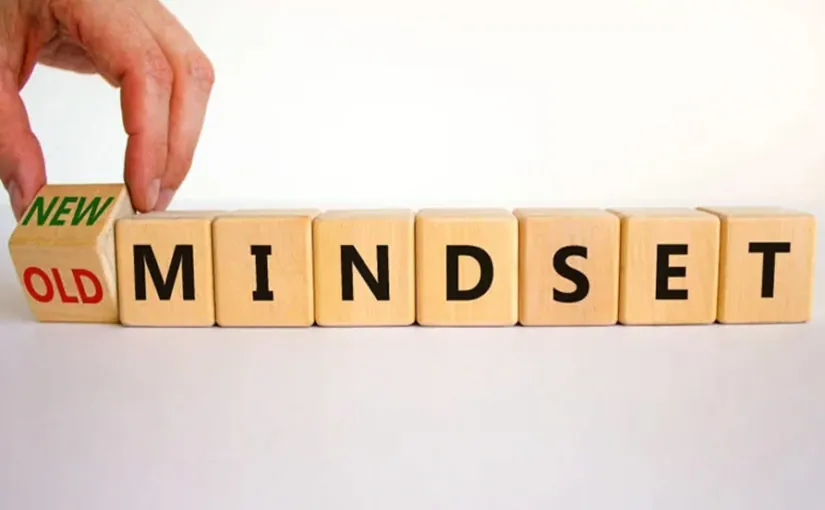Written by: Garima Patet
Successfully hiring the “right” candidate is only half the battle won.
If you truly wish to setup a successful path for the new hire and retain top talent then a carefully planned, as well as carefully choreographed new hire on-boarding programme is essential.
While most companies agree that on-boarding is one of the best & most effective ways to align new hires with their company’s culture & environment.
A study conducted by Aberdeen has revealed that only 32% of companies currently have a formal on-boarding process.
An effective on-boarding is one of the best ways to align new employees with expectations and organisational culture and without it; the risks of losing the hired talent are immense.
According to a 2007 study by the Wynhurst Group, when employees go through structured on-boarding, they are 58% more likely to remain with the organisation after three years.
Therefore it makes a lot of sense to design new hire on-boarding programmes with immense care and deliberation.
Let’s take a look at the top ten essentials for a successful on-boarding programme:
1) Plan it well
An effective on-boarding programme is the one which immerses the new hire into the company’s culture.
The key is to ensure that the programme does not end up becoming transnational in a closed classroom session; instead it needs to be an engaging experience for the new employee.
A good strategy to design an effective On-boarding would be to consider the length of the programme.
As per a recent study companies in which new hires are exposed to longer on-boarding programmes achieve better proficiency levels, at least 34% faster than those in the shorter programmes (source).
2) Pre –boarding Phase
Many high performing companies agree that a successful on-boarding programme gets initiated from the time a candidate is hired, which means that there are mechanisms and sub processes within the hiring process that prepares and aligns the new hire with the culture of the company as well as communicates what their brand is all about.
An excellent example is the on-boarding programme at Twitter; in which they have over 75 steps and handoffs between Recruiting, HR, IT, and Facilities.
Some companies also simplify things for the new hire by creating a docket or a checklist which is mailed to them in advance so that the new employee comes prepared with necessary paperwork on the first day of their joining.
3) First impressions first
First day at work can be jarring especially for a fresh gradate right out of college.
Legendary brands such as Ritz-Carlton believe that joining a job is like joining a family therefore that needs to made memorable.
Micah Solomon writes about Ritz Carlton’s philosophy for the first day of new hire on-boarding programme in his article.
Particularly in hospitality industry, all top luxury hotel chains consistently incorporate immersive elements in their on-boarding programmes for the new employees to let the new hire ‘experience’ their product & services from the guest’s perspective.
For instance Taj Hotels, Resorts, Palaces & Safaris welcome a new employee just the way they would welcome their guests.

The new hire is welcomed at the hotel lobby by senior leadership and is made to experience the welcome ritual as they would do for a guest; this is followed by a special tea & coffee welcome ceremony in the main restaurant with all key heads of the department.
This ritual puts the new employee instantly at ease as they freely interact with the senior leaders and exchange introductions and also gives them an insight that how would a guest feel when they are welcomed in the same special manner thereby aligning them with the organisational culture & brand promise right from day one.
4) On-boarding Kit
An On-boarding kit may sound like a mundane tool however its importance to a new hire is immense.
If carefully designed and compiled it becomes the first “Go-to” buddy for them.
Include important information such as FAQs i.e. frequently asked questions, important phone numbers, team cafeteria timings, city information.
Add those important booklets of safety guidelines and emergency procedures along with the company’s credo card.
An On-Boarding Kit is great way to start aligning the new hire right from the first day as it gives them a starting point to think how their life would be as a member of your team.
Make sure that the quality of the On-Boarding kit should truly reflect the culture & brand promise of your company.
5) Make it personal
A well planned & a well-choreographed on – boarding programme is about personalisation.
Perhaps one of the biggest fears of a new hire is the fear of ‘standing out’ on the first day of joining.
How wonderful would it be if the new employee walks in on the first day and the team already know their name!
And how wonderful it would be if the communication boards across the floor or heart of the house post warm, welcoming notes and post- its with a welcome message!
Make the first day deeply personal for the new hire by utilising different “Touch point” opportunities, and it could start as simply as a personalised welcome aboard email or as thoughtful as the head of the unit welcoming them personally at the front gate addressing them by their name!
6) Show around of the workplace
One of the most critical elements of an on-boarding programme is to orient the new hire with the office space.
A personalised walk around the office taking the new employee goes a long way in creating meaningful connections with the rest of team.
Scheduling a real moment for the new hire to be personally welcomed is important.
We can make it shorter or longer depending on the requirements of the role.
One of the key connecting moments is the lunch hour at work.
Take the new hire to dine at the team cafeteria and introduce them to as many people as possible, remember, to introduce them by their name!
Also, ensure that you enrol them onto your eLearning platform in-advance. There’s nothing worse for them to having to wait around to gain access to systems.
7) Company Values & Ethos
As great it is to put the new hire at ease by integrating fun elements in the on-boarding process, it is equally important to communicate to them the company’s ethos and value system.
When new people join a team, they also bring with them a whole set of their own personal values.
While with the right hiring process & recruitment tools you select talented employees who also are the right fit for your company’s culture, still, it is absolutely essential to create opportunities for clearly communicating the brand promise statement along with ethos of your brand to completely integrate them with the teams.
This inculcates in them a feeling on ‘Oneness’ and achieving ‘common’ organisational goals.
8) Assigning a buddy
An effective on-boarding programme is the one which not only orients & immerses the new employee into the company’s culture but also creates plenty of opportunity to make them reach their professional & personal goals.
To do this the new employee needs hand holding and guidance especially when they start their journey afresh in your company.
This is where a ‘Buddy’ fits in. So who is a Buddy?

A Buddy is someone who chalks out a path and facilitates learning for the new employee right from their first day.
Buddies are important because they can assist the new hire to gain role clarity.
A buddy may not be an expert level associate but should be resourceful enough to identify the emotional needs and training needs of the new hire.
A buddy needs to be a troubleshooter and a bridge for the new hire within the team and outside the departmental context.
A buddy would be someone who has strong interpersonal skills and has the ability to deliver the ‘moment of truth’ on the shop floor for the new hire.
A buddy is also someone who makes the new employee open up to them so that personal experiences at work place can be discussed at ease from time to time.
A buddy should not be perceived as someone who needs to the best friend of the new employee instead a buddy should be seen as a guide and a ‘go to’ person who has a teaching spirit.
9) Measure effectiveness
Irrespective of the duration of your company’s on-boarding programme it is important to monitor and measure its effectiveness.
Depending on the nature of industry, different companies may choose to formulate different strategies to make their on-boarding programmes; however, it is imperative to measure their effectiveness as well.
Seeking feedback and putting systems to measure the effectiveness of your on-boarding programme eventually decides the lifespan of the new hire in your company.
If your company truly cares about retaining talent then they should put an honest effort to formulate a mechanism for measuring effectiveness of the On-Boarding programme.
A very good example is to utilise a methodology of taking feedback from the new hire and also organise an assessment test at the end of the programme.
In hospitality industry many of the leading hotel brands conduct skill certifications after the initial three months of joining to assess whether the basic skills have been acquired by the new hire.
This also puts accountability on the shoulder of their buddy along with their immediate supervisors.
Investing time in the training & development of the new employee is as important as Integrating them into your brand’s culture.
But the only way to know whether you are on the right track with your intent is to measure the effectiveness of your on-boarding programme at regular intervals.
10) Formal & regular interaction with leadership team
An effective on-boarding programme creates a transparent communication channel between the new employee and the leadership team.
Communication mechanisms should be thoughtfully and timely built into the on –boarding programmes not only to collect feedback but also to convey & manage expectations.
These timely interventions between the new employee & departmental heads or between new employee and human resources team give an opportunity to both sides for course correction and introspection.
The intended meetings can be as formal as a structured office chat or as informal as a meal experience such as breakfast or lunch or dinner.
The ‘fresh eye’ perspective of the new employee is valuable feedback for the leadership to assess the quality of effort put into running their on-boarding programme and the ‘sincere care’ demonstrated by these efforts for seeking feedback by the leadership team puts the new employee at ease and more receptive to your company’s work culture.
There are plenty of other elements which can make a new hire on-boarding programme more meaningful and more effective.
The key is to identify the message that you wish to convey to the new employee about your brand and interweave those elements in your on-boarding programmes.
The new employees are impressionable and if any company is keen to retain their top talent who can blossom into homegrown achievers & performers then care has to be taken right from the beginning to set them up for success.
What additional elements would you like to add to this list of the essentials of an on-boarding programme to make it more effective & meaningful?
As an eLearning company, Skillshub is committed to creating efficient and impactful learning experiences. Contact us to find out more.
Written by: Garima Patet


 Written by: Garima Patet
Written by: Garima Patet









